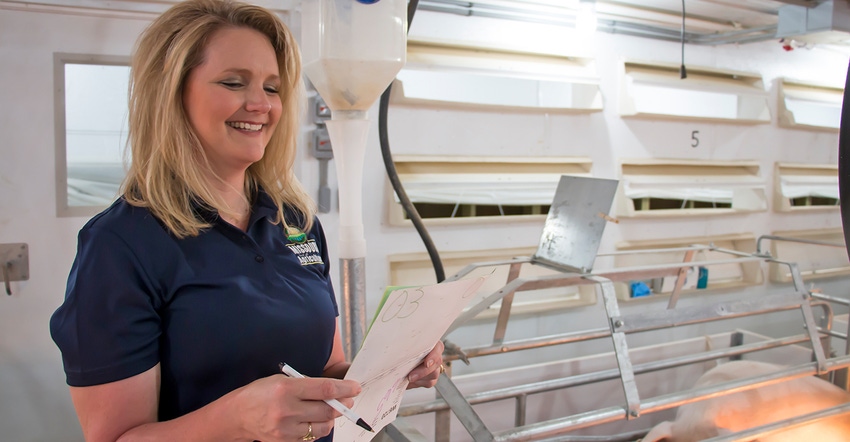October 28, 2019

It feels like everything is so personal these days. We all make our buying decisions based on what’s most important to us — our family, our budget or our values. It becomes more difficult to do that when previously easy-to-make choices in the grocery store are distorted by misinformation.
Scroll through almost any social media feed and you’ll learn something about agriculture, whether true or not. As a fifth-generation family farmer, the misguided posts deeply bother me. One day, it's cattle being blamed for global warming. The next, it’s all meat production taking the brunt of public scrutiny.
I believe there’s good in every person. I’ve never met a consumer who made up a fact about farming. If they believed some misinformation, it’s almost always because they’re being told something by a friend or an “expert” online. Their intentions to take better care of their family, community or land align perfectly with many of those involved in farming and ranching. They just don’t know it yet.
Protecting the environment
When the middle class in a country grows, it’s typical to see meat move from the outside of the plate as a side to the inside as an entrée. Certain advocacy groups would have you believe that if you reverse that process, you will benefit the environment. Today, those groups are calling for consumers to reduce their meat consumption and, if possible, stop eating meat entirely.
The facts are much different than that narrative. The EPA estimates that livestock production accounts for only 3% of our total greenhouse gases. American farmers have increased meat production by almost 50%, milk production by 16%, and egg production by nearly 33% since the 1990s. However, greenhouse gas emissions remained relatively stable, so every gallon of milk or pound of meat in the grocery store has a smaller carbon footprint today.
Powering up nutrition
The newest social media confusion is centered on if eating meat is healthy for your family. Whether it’s a juicy pork loin, lean sirloin steak, grilled chicken breast or another tasty meat option, Americans can enjoy their protein of choice any way they like it.
Between beef, pork and chicken, there are more than a dozen “extra lean” cuts of meat that have been approved by the American Heart Association. You also can control your calories with these cuts while boosting many important vitamins and minerals — a combination that can be hard to match with any other flavor profile.
Care for the animals
Today’s livestock industry looks a little different than it did only a few decades ago. Some families raise their livestock outdoors, others indoors.
In my husband’s case, his family members moved their hogs indoors more than 30 years ago under the advice of their veterinarian and nutritionist. They took their goals for our farm, a growing family and livestock care into their decision as well.
The role I have on the farm didn’t exist 20 years ago when I married Kevin, but now our record-keeping requirements demand it. Today, we work together as a team to provide specific diets to our livestock, climate-controlled facilities and individualized veterinary care. Agriculture technology is not only creating new jobs on our farms and ranches, but also allowing for data-driven and individualized livestock care.
Strides forward
What works for our family farm won’t work for every family. Regardless of the method of production, our family farmers in Missouri always put the care of their livestock first. That’s a tradition that will never change.
Today, one farmer can feed up to 166 people. In the 1930s, a farm produced enough to feed a family of four. That’s right — farms have become so technology driven and efficient that one farmer can feed 160 more people than 90 years ago. This was a necessary shift as more people left the farm to get a job in town.
Our work in agriculture stewardship will never be complete. About 98% of our farms in the U.S. are family owned. As the next generation of farmers and ranchers return to the farm, they will be focused on continually improving their land, so farming becomes more sustainable than ever before.
Ultimately, I believe that every consumer should have a healthy, affordable and nutritious food choice that fits their needs. Some may have a protein allergy or other medical reason that forces them to stay away from meat. Others may simply love the taste of fruits, grains and vegetables.
As long as each consumer has the accurate and truthful information they need to inform their choices, that’s a food system we should all believe in.
A key message for me for anyone involved in farming is that diversity in agriculture is so important today. It never pays to throw your neighbor under the bus, even if you feel as though you’re simply protecting your own farm. It’s that diversity in agriculture that will help us meet, and encourage, every consumer need.
Chinn is the director of the Missouri Department of Agriculture and a hog producer from Clarence, Mo.
About the Author(s)
You May Also Like




